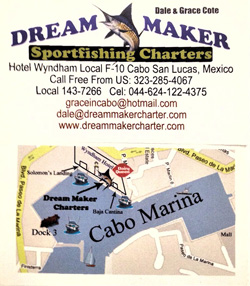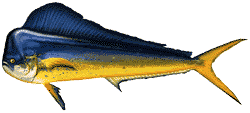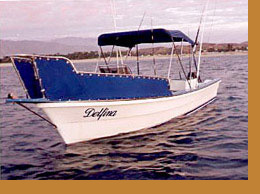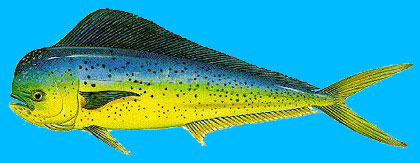|  Dream Maker Sportfishing Charters Dream Maker Sportfishing Charters
Grace or Dale:
143-7266 (Local) ... 044-624-122-4375 (Cell)
PANGA 23 feet $175
26 feet $ 275
Bigger boat $450
The Company - Dream Maker - is under the hotel Wyndham in downtown see Grace or Dale.
They are Perfect. Tell them Matt send them ( From Turkey with his Cousen given the reference ).
They clean the fish for you and freeze or smoke for delivery.
Fishing
from the Village of La Playita

The small village of La Playita is located one and half miles east of downtown
San Jose del Cabo, adjacent to the Tropical Estuary that is fed by an endless
supply of fresh water delivered by the San Jose River. The majority of the residents
in this village are fishermen and has been so for many generations. There are
now over 1,000 people living here, including close to 100 North Americans, who
have fallen in love with the unique beauty of this little tropical paradise in
Southern Baja. In recent years there has been a boom of development happening
along the entire Baja Peninsula and particularly in Cabo San Lucas, where it is
now becoming more and more just like another Southern Californian city. Despite
the rapid growth and changes that are taking place nearby, La Playita has remained
much the same as the old days and has thus retained its charm. There are no launch
ramps or marina Facilities here so the only way to get boats into the water is
by man power. 
The type of boats used by the locals fleets are called Pangas, they are extremely
seaworthy, of fiberglass construction and equipped with powerful outboard engines.
They range from 18 ft. to 25 ft., but the average sport fishing panga is 22 ft.
or 23 ft. Especially practical boats for launching off of the beach and through
the surf, with all the luxuries of bikini tops for shade and padded seats. The
beach of La Playita is ideal for launching pangas because of it being more shallow
than other areas in the vicinity and the surf is more predictable. Local pangeros
have .been born and raised here all their lives and are very knowledgeable of
all the local offshore fishing hot spots. One of the more well known fishing grounds
is the Gordo Banks and the fleet based at La Playita has an advantage in that
they are located only ten miles away from this world famous area.

Anglers
have the opportunity of catching a wide variety of pelagic gamefish
here, including wahoo, yellowfin tuna and dorado ( mahi mahi, dolphin
fish ) but perhaps the most challenging fish of all are the black
and blue marlin. "These larger marlin can be taken during all
the months of the year but the peak season is when the water temperature
is at its warmest, July through November. Average weights of these
largest members of the billfish family is 250 Ib. to 350 Ib. and
every season there are several specimens that are weighed in that
tip the scales at close to 1000 Ib. A common question that is asked
by visiting anglers is ; Is it possible to catch such a large fish
from a chartered panga? Well the answer is; Not only is it possible
but it ,is quite an experience, a true hunt, quite different from
being in a larger yacht that can back down on the fish for you,
in a panga these marlin actually can pull you through the water
at a good rate of speed for hours on end and put on a display of
power that is unequaled by any other fish. In recent years there
have been several marlin over 8900 lb. accounted for from these
pangas and at least one. monster black marlin brought in that weighed
993 Ib.
There is also
a controversial debate among big game fishermen as to
which marlin is the most powerful adversary. From our experiences
we
have learned that both black and blue marlin can give exceptional
accounts of themselves and display tireless stamina that will test
the most fit of expert anglers. Blue marlin are definitely the more
common species and are best known for their spectacular aerial jumping
displays, which can be a disadvantage to the fish that spends too
much effort on the surface and ends up actually jump themselves
out of energy. Black marlin on the other hand do not jump as often
as the blues do and seem to conserve their energy more. It is common
for the
blacks to jump but typically they will just come up a few times
during the fight, unlike the blues that will sometimes come out
of the water
countless times. The blacks prefer to head towards the bottom and
stubbornly pace themselves for the ensuing marathon.
The most popular
techniques used by the local fishermen is to troll larger live baits
around the vicinity of the offshore banks. Preferred baits are yellowfin
tuna, bolito and skipjack. Heavy tackle is suggested and most anglers
opt to use 80 Ib. main line, with reel
sizes of # SOW common, capacity of at least 500 yards of line
Monofilament leader of 200 Ib. to 50C Ib. test is used, with lengths
of the leaders being from 12 ft. to 25 ft. Hooks sizes range from
8/0 to 12/0, depending on the particular live bail that is being
trolled. Since these larger marlin are not numerous it does take
great deal of patience to have the chance of one coming up on your
bait or lure. At times the action does get very good and you can
have many strikes in one day. The periods around the full noon can
be when the big marlin are particularly active and in the feeding
mood. Blue marlin have a
tendency to strike artificial lures more than blacks do, who have
a
preference for the live bait. The sizes of the lures most commonly
used are 10 to 14 inch in length and though there are endless color
combinations that are available it seems that the natural bait colors
have the most success, such as dorado colored green and yellow patterns,
green and black, blue and purple and squid colored jigs in brown,
black, and orange combos can be especially affective.
Not every angler
is physically fit or experience enough to do battle with this great
monsters of the Sea from a Panga, in fact most anglers are going
out for there first time. For the novice blue water anglers the
captains will guide you to the locations and the methods to enjoy
a day of vigor's fishing in the class of 30 to 70 pounds. We encourage
all of our guest to take advantage during your visit to Los Cabos
to rent a Panga and spend a 1/2 day fishing out of La Playita. We
are very fortunate here in Los Cabos to live along the shore of
this great and abundant Sea of Cortez. This is considered the must
rich and unspoiled Sea in the World.
To Make a reservation
pleas contact Eric Brictson Fleet Owner/Operator Gordo Banks Pangas
Phone/Fax: 011-52-114 2-11-47
Website: www.gordobanks.com
E-mail: [email protected]
THE WHALES ARE
BACK
It is estimated
that there are about 15,000 gray whales in the world, and every
year about 11,000 swim from the Bering Sea by the North Pole to
the southern lagoons of Baja California, a round trip distance of
10,000 miles. This is the longest migration of any mammal in the
world.
 The
pregnant cows start the migration in late summer, with the
first wave of migrating grays passing British Columbia in
early-December. They travel at about 4 knots day and night,
navigating in their mysterious way. In early January they
begin arriving at their chosen lagoons, Ojo. de Liebre, San
Ignacio and Bahia Magdalena. The
pregnant cows start the migration in late summer, with the
first wave of migrating grays passing British Columbia in
early-December. They travel at about 4 knots day and night,
navigating in their mysterious way. In early January they
begin arriving at their chosen lagoons, Ojo. de Liebre, San
Ignacio and Bahia Magdalena.
Sometimes the
cows don't make it to their birthing lagoons, and
newborn whales have been spotted as far north as Southern California.
By mid-February cow-calf pairs can be seen everywhere. The intimate
details of the whales are constantly being studied, but there's
still much to learn.
In 1977, a researcher,
Storro-Patterson, was fortunate to catch an
up-close whale birthing. "The calf I observed surfaced and
breathed several times on its own, without any assistance from the
cow. The cow actually swam rapidly away from the calf at the moment
of birth. After thrashing and tail lobbing for a few minutes, she
returned and lifted the calf out of the water. She repeated this
a few times during the next several minutes. The calf seemed very
awkward and even desperate at times. It would lurch to the surface,
appearing to be trying to
lift itself out of the water...the calf inhaled water a few times,
only to lunge and struggle more energetically at the surface. Within
a period of about 30 minutes following birth, the calf calmed down,
surfacing and breathing in a coordinated way."
Outside the
tranquility of the birthing. lagoons is the activity going
on in the open Sea around the southern tip of Baja and into the
Sea of
Cortez. Mating activity is in full swing with vigorous chases, tail
lobbing, breaching, rolling and thrashing in the water. Bulls outnumber
cows so trios are frequent with both bulls trying to mate with the
cow. The love-making of a pair of forty foot whales is of stupendous
proportions.
Then the bulls
leave. Around February they start their migration
North, even as more whales are arriving. The cows and calves linger,
and by late February the calves are eager for the adventures of
the open sea, so can often be sited from land and boats from both
coasts of Baja California Sur. Look for the sure sign of a whale...water
shooting up from their blow hole. The last cows are gone by the
end of May.
|